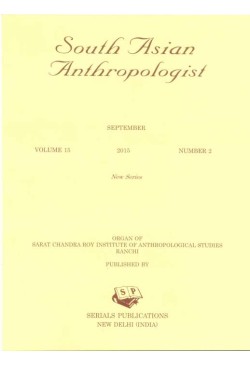
South Asian Anthropologist
Frequency :Bi-Annual
ISSN :0257-7348
Peer Reviewed Journal
Pastoralists of the Himalayas: Gaddis of Bharmaur Tribal Region in Himachal Pradesh
Rules and Regulatory Situation in Practicing of Traditional Medicine for Healing in South Asia
Maternal Mortality Rate and Infant Mortality Rate in Assam, Northeast India: A Serious Public Health Challenge
Prevalence of Hypertension among the Urban Slum Muslim Women of Kolkata, West Bengal
Traditional Baul Singers and Their Esoteric Practices in Birbhum
The Bauls represent a unique song and musical tradition and esoteric cult practices of a religious group in Bengal. The baul songs are not only an expressive musical tradition, but also carry a dubious symbolic sexual communication hidden in their songs. The aesthetic appeal of their presentation is coupled with their typical robes, instrumentation and body decoration with sandalwood paints. The cult is said to have its origin in 16th century following a confluence of the Tantra, the Vaisanavism and the Sufism in Bengal. We find a special status of baul as a musical tradition and as singers after the poet Rabindranath Tagore took an active interest in it. Since then, there have been a number of literary and anthropological works on the bauls. The cult has caught the attention of the elite urban classes and got popularized through media, films and literary exercises. Now, many baul festivals are organized throughout the year, the baul singers visit several countries of the world and perform the cultural identity of Bengal. Though, the common people still nurture an image of typical baul which remains a point of attraction because of the mystic nature of their life and the performing art. The baul tradition has been passing through a number of transformations at present. The paper attempts to focus on the present state of the art and associated practices of the baul singers.
Drinking of Arsenic Contaminated Water and Age at Menarche: An Association Study in North 24 Parganas of West Bengal
Marginalization of Third Gender within Development: An Empirical Study in Bilaspur, Chhattisgarh
A Study on the Dynamics of Postpartum Amenorrhoea in a Minyong Society Using Cox’s Proportional Hazards Analysis
Ethno-medicine and Tribal Health: A Study in Munchingput Mandal of Visakhapatnam District, Andhra Pradesh
Untiring Mind: A Documentary Film on Dr. Biraja Sankar Guha